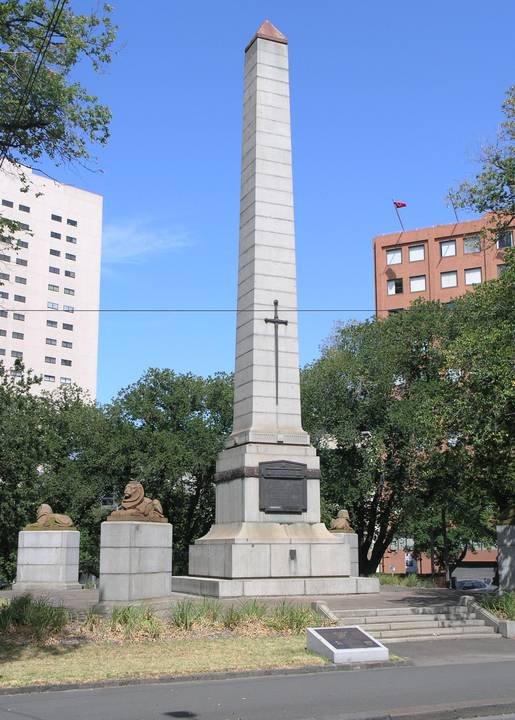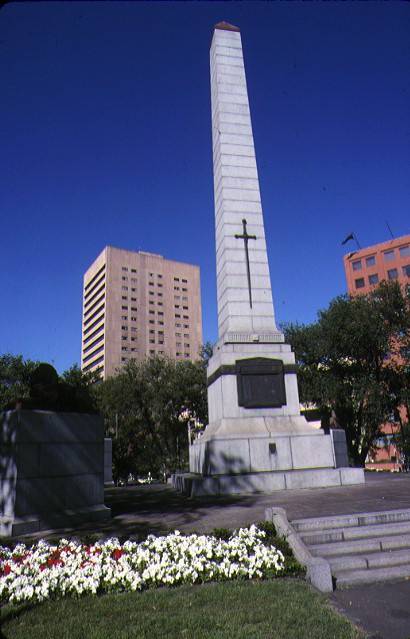| Back to search results » | Back to search page » |
|
SOUTH AFRICAN SOLDIERS MEMORIAL
Statement of Significance
What is significant?
The South African War Memorial Committee was formed at a public meeting in 1911 to raise funds for a memorial to honour the soldiers who fought and died in the Boer War. The architect Irwin & Stevenson won the design competition and the memorial was completed in mid 1924. The memorial was to have originally been hexagonal in plan with six bronze lions but lack of funds resulted in a more simple design. Eventually more money was raised and the four sandstone lions, designed and sculpted by Stanley Hammond, were added to the memorial in 1952. The memorial is a grey granite obelisk set on a podium. It is embellished with a bronze dagger, plaque and a wreath which is decorated with eucalyptus motifs. The four sandstone lions are set on granite pedestals on each corner of the podium.
How is it significant?
The memorial is of historical, social and aesthetic importance to the state of Victoria.
Why is it significant?
The South African Soldiers' War Memorial is of considerable historical and social significance as the major memorial associated with the Boer War in Victoria. Its monumental size and landmark position imbue the memorial with a strong, symbolic presence. It is the only memorial built in Victoria to commemorate all Australians who took part in the war, rather than local soldiers. The Boer War was a pivotal moment in Australia's history. It was the first time that volunteers from Australia and New Zealand had fought together in an overseas war and the first time these troops paraded together in Melbourne and Sydney, presaging the ANZAC tradition. The war was at a time of growing national consciousness for an Australia declaring its own nationhood.
The memorial is a poignant symbol of the war and conveys the profound sentiments of the Victorian community towards this important event in Australian history. The incorporation of eucalypt motifs into the bronze wreath reflects the rising nationalism of the time.
Group
Monuments and Memorials
Category
Memorial

















